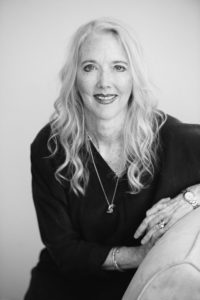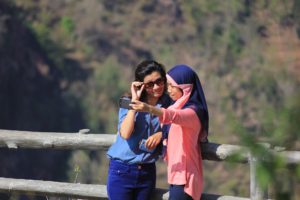J-Term: Selfies Now & Then

This next installment in the J-Term series has been written by Lisa Spaar, University of Virginia Horace W Goldsmith Distinguished Teaching Professor of Creative Writing. See a full list of her works here. See the other J-Term blogs here.
One of the most rewarding settings in which I teach my course “Selfies Now & Then: Self-Portraiture in Visual Art and Poetry” is in the J-Term: ten intense, six-hour days in early January, sandwiched between the fall and spring terms, devoted to an investigation of the myriad ways in which poets and visual artists have portrayed themselves across centuries and cultures. In two brief but replete weeks, this seminar explores notions of the created self, the various processes of poetry and visual art, the ubiquity of self-portrayal in our moment (Facebook, Instagram, Snapchat, Facetime), and the reasons why human beings are inspired not only to construct the self in art and words, but also what compels human beings to create art at all.
What I particularly love about the J-Term experience—apart from the way it allows for students to bond quickly with each other and the course material, and to make extended forays into the texts and artwork at hand—is the fact that many of the students taking the class often come from STEM fields. The class is a literature course. It fulfills the University’s Second Writing and Humanities requirements, and just as many humanities students take their math and science courses in the summer or J-Term in order to allow themselves time to focus on and succeed in an area outside of their interest, major, and even comfort zone, many students who are steeped in STEM fields are similarly drawn to the chance to complete humanities core requirements in semesters when they aren’t burdened by heavy major requirements and labs.
Students from chemistry, biology, physics, engineering, and psychology bring such a fresh perspective to the study of painting and literature. For instance, in a discussion of Van Gogh’s use of color, one student talked about certain lead pigments and their tendency not only to produce rich red tones but also to lend an atmospheric “gel-like” quality to the paint itself. A psychology student was able to talk about various stages in infant development at which the sense of a discreet, rather than symbiotic, self emerges. A biology student shared details about the anatomical stereoscopic structure of the human eye in relation to a poem under discussion. In addition, then, to the pleasure (and challenge) of working in a class in which interpretation rather than memorized fact plays a crucial role in discerning truth, the students make trips to the Fralin Museum of Art, speak with art historians, and actually create poems and visual art, adding a hands-on dimension to our academic study.
I was interested to read in Forbes, and in recent newsletters from Yale and Rutgers universities, that many medical schools are now collaborating with art and literature departments in order to sharpen the observational and interpretative skills of future physicians. According to Forbes (10/20/13), “As medical schools have become more innovative, and as their approach to training medical students has evolved…having a strictly science-related background may not be the only way to increase the probability of gaining entrance.” A recent graduate of my Area Program in Poetry Writing, who went on to work as a stock broker on Wall Street, said that his interviewers were interested in the ways in which his close and creative engagements with language and critical analysis set him apart from more traditional applicants.
Finally, however, the real reward of this course is that, if we’re fully engaged, we can emerge from the shared experience of exploring the diverse realm of self-portrayal, from antiquity through the very present moment, with a more open-minded awareness of each other: our individual, intrinsic worth and our shared humanity. What we develop by looking into visual and literary texts are habits of seeing and discernment that promote and inspire habits of curiosity, empathy, and life-long learning. Students in the course also say that they also learn a lot about themselves in the process.
- A Revolution in the Air: The Wright Brothers Take to the Sky on December 17, 1903
- Musings on National Violin Day
- Making the Promise Real: How a UN Tax Convention Can Fulfill the UNDHR’s Vision
- UVA Club of Atlanta: Virtual Pilates Class
- UVA Club of Vietnam: J-Term Farewell Social
- UVA Club of Charlottesville: Hoos Reading Hoos January Book Club

